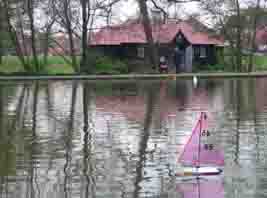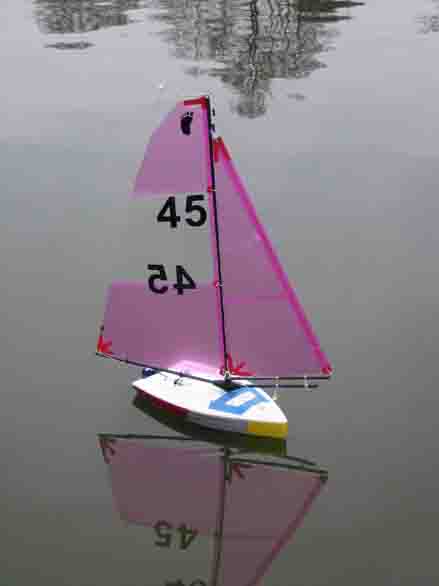Paah, the ever-efficient Footy publicity department pipped to the post by the punter (and try saying that after a few beers). Anyway, here we go.
Footy Euro Grand Prix
After horrendous weather in the Midlands resulting in serious flooding, it was debateable whether Britain’s first Footy open regatta would be on – but it was.
Folk came from Nottinghamshire, Derby, Gloucester and as far afield as Kent, as well as Bourneville, the host club. Unfortunately the contingent from Colwyn Bay were cut down by their various medical problems - arthritis and back pain to scream at, illness in the family - and the very unreasonable refusal of Keven Jackson’s kids to walk down the M6 from Burnley if father wasn’t going to drive them! Had they all turned up, there would have been a field of 11. As it was, we had to content ourselves with 5.
A total of 18 races was sailed using an adaptation of the 50 ft Internet Classic course with a wing mark added to give two triangles and a beat to the finish. As usual the wind at Bourneville was swinging around and varying in strength. All in all very testing conditions that kept everyone on their toes.
A variety of designs were represented; John Birnie was sailing his award winning Shazam, Gary Sanderson, Alan Nicholson and Trevor Thomas sailed Razors, Bill Green sailed his LaJabless. The Razors all had una rigs based on Brett McCormack’s input, Bill’s Lajabless had a swing rig to the Stollery design and Shazam was conventionally rigged.
Most of the guys had not competed in a race before so time was taken to adjust and sort boats where needed and all went away better for it. Not unexpectedly, experience, local knowledge, a well prepared boat and (just possibly) a modicum of talent (!) won the day - and pretty emphatically at that. Bill Green won 14 out the 18 races, the others being won by John Birnie and Gary Sanderson.
But was it fun? Well … First of all the Bourneville club hosted a really enjoyable day out, very ably run by Race Officer Mike Harris. Plenty of tea was drunk, chocolate biscuits devoured and a lot of information swapped. To quote “A jolly good time was had by all”. People who had come with some trepidation found out a lot they didn’t know about sailing model yachts - for which all thanks to our Bourneville hosts – and the much more fundamental fact that racing was not as fearsome a lark as they thought. At the end of the day everyone agreed that what to some extent turned itself from hi-fallutin championship to a kind of competitive workshop was both valuable and fun – and that they wanted another one, soon.
For design watchers, no firm conclusions could be dawn. In 7-9 mph (3.5-4.5 m/s), the Lajabless went well but Bill Green’s success probably owed as much to Bill Green as anyone else. Vindicating the Chris Dicks Award judges, Shazam seemed to be pretty much on the pace. The mass absence of Colwyn Bay was unfortunate: at full strength they would have contributed a small flock of Kittiwakes, Keven Jackson’s interesting Foot Print and examples of Angus Richardson’s Akela and 507 designs.
In conclusion, both competitors and the very experienced Bourneville race managers agreed that the modified Internet course was ideal for Footys. It was small enough for competitors to be able to see, and gave short, exciting races. In a relatively large lake like Bourneville, its small size means that many heats can be run simultaneously. Even at a relatively ‘beginners’ stage, everyone could see that it could be quite wickedly tactical.
Results
- Bill Green 18 pts Heron LaJabless Swing Rig
- John Birnie 26pts Birnie Fat Bullet Conventional Rig
- Gary Sanderson 37pts Hagerup Razor McCormack Una
- Trevor Thomas 45pts Hagerup Razor McCormack Una
- Alan Nickerson 66pts Hagerup Razor McCormack Una
For pictures see.
http://s111.photobucket.com/albums/n138/angusrichardson/Euro%20footy%20GrandPrix/

 :p:D
:p:D


